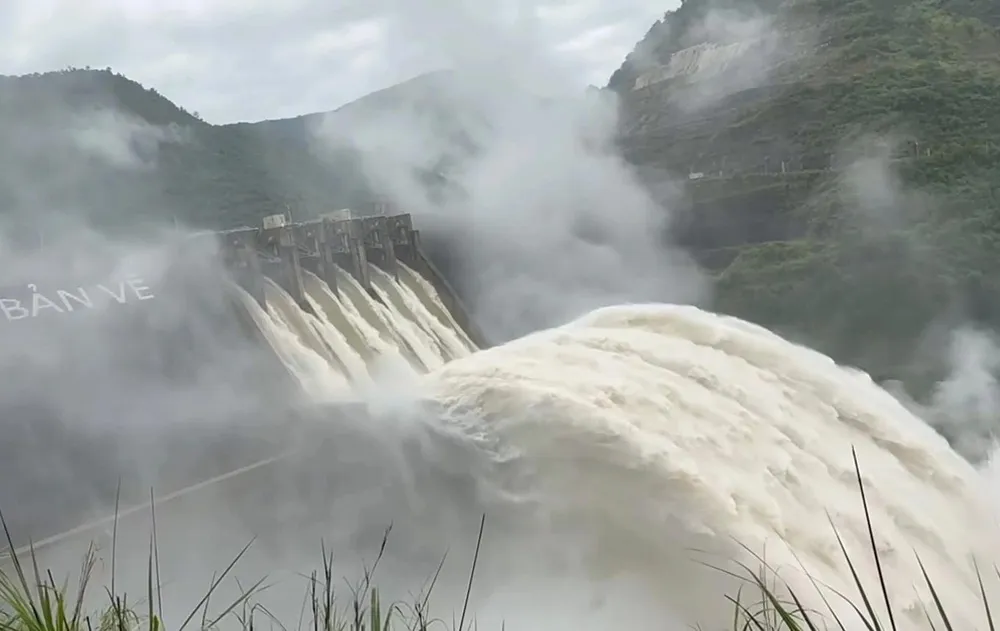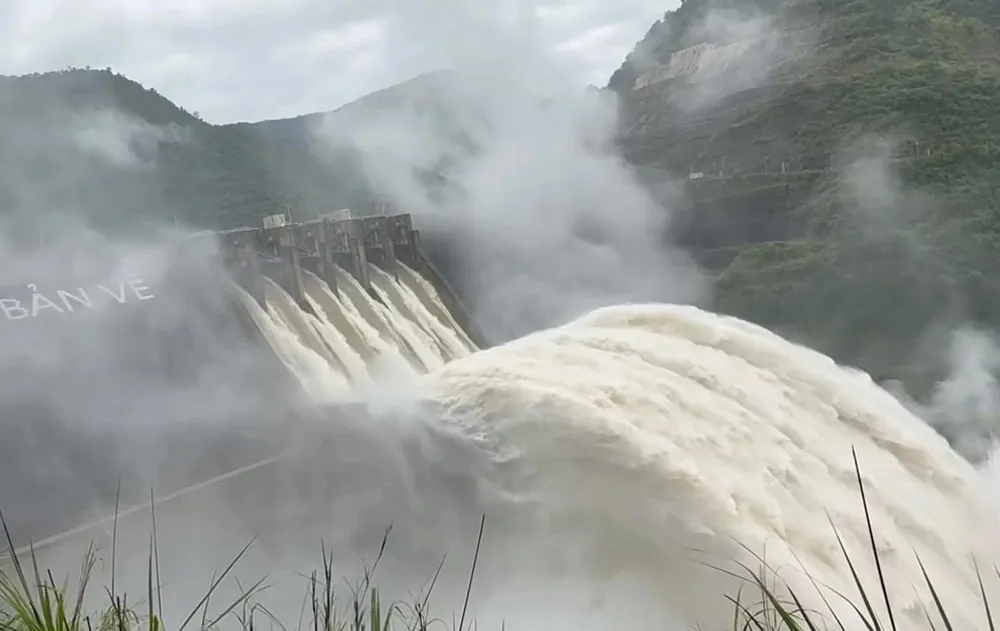
According to the automatic water level reporting system at hydroelectric reservoirs of Vietnam Electricity Group (EVN), from the night of July 22 to the early morning of July 23, the flood water flow into Ban Ve hydroelectric reservoir in Nghe An province increased rapidly.
The Department of Dyke Management and Natural Disaster Prevention ( Ministry of Agriculture and Environment ) reported that at 2:00 a.m. on July 23, the flood flow into the lake had reached 12,800 m³/second - exceeding the peak flood test threshold of 10,500 m³/second, corresponding to a frequency of 0.02%, also known as "floods with a recurrence period of 5,000 years".
Previously, on the night of July 22, the flood flow into the lake gradually increased to 9,543 m³/s. At this time, the hydropower plant had to limit discharge to cut off flooding downstream, but then had to open all 6 spillways on July 23 to ensure the safety of the project.

Need to understand the flood correctly
Speaking to SGGP reporter, Associate Professor Dr. Hoang Minh Tuyen, former Director of the Center for Hydrology and Water Resources Research, said that this is a hydrological concept, reflecting a rare situation. “5,000-year frequency” does not mean a cyclical occurrence of once every 5,000 years, but rather a level of rarity (difficulty) in occurrence.
Mr. Tuyen used the example of the lottery to illustrate more easily the probability of 1 time in 5,000 years, that is, the probability of winning the jackpot each year is only 0.02%. According to him, a major flood peak occurs once every 5,000 years, can happen at any time in 5,000 years, but can also repeat many times in 5,000 years, just like it is possible to win the jackpot many times.
Dr. Luong Huu Dung, Director of the Center for Hydrological and Oceanographic Research (Institute of Meteorology, Hydrology and Climate Change, Ministry of Agriculture and Environment) also said that the concept of “5,000-year flood” does not mean that it only happens once every 5,000 years. This is the way experts say it based on probability statistics from a series of flood data in the past.
In hydrology, flood frequency (symbol P) is the probability of a flood with a discharge equal to or exceeding a certain level. Return period (symbol T) is the average number of years between two floods of similar magnitude. These two values are related by the formula: P = 1/T. Thus, a flood with a return period of 5,000 years means P = 1/5,000 = 0.02%.
According to Mr. Dung, this means that the probability of a flood greater than or equal to this level occurring is 0.02% per year. “There is no guarantee that it will only happen once every 5,000 years, or only once in 5,000 years,” he said. In theory, it is still possible for two such floods to occur in two consecutive years, although the probability is extremely small. This is a probability statistic, not a time rule.

Therefore, the term “5,000-year flood” is only used to describe the rarity and extremeness of the phenomenon, and is often used in the design of reservoirs, dikes, and disaster prevention planning, but not to predict the specific time of a flood.
In fact, if August had a rainfall equivalent to July and the measured flood flow also reached the same level, it would still be possible to evaluate it as a “5,000-year flood” again, because that is a name based on statistical probability, not time frame.
Don't be mistaken that it only happens once every 5,000 years.
Mr. Luong Huu Dung noted that the misconception that "there has been a flood every 5,000 years, so there will be another one in 5,000 years" is a harmful misconception that can cause unnecessary subjectivity or panic.
Some people even ask: "Vietnam's history is only over 4,000 years old, so how can we calculate the 5,000-year flood?" According to him, this is a method of interpolation from long data series and applying statistical models, not depending on a specific time frame in history.
Faced with the reality that climate change is causing extreme weather to appear more and more abnormally, the Institute of Meteorology, Hydrology and Climate Change is implementing a national research project to assess the flood resilience of the dike system in the Red River basin. The goal is to develop technology to identify large floods using machine learning (a branch of artificial intelligence), propose a plan to regulate the operation of reservoirs, and at the same time improve the efficiency of water use while ensuring flood safety.
The Director of the Center for Hydrological and Oceanographic Research suggested that the media and professional agencies need to understand the concepts correctly so as not to be subjective but also not to panic in the context of increasingly complex natural disasters.
Updated data up to 5:00 p.m. on July 23 from EVN's hydropower water level reporting system, the upstream water level at Ban Ve Lake has exceeded the normal rising water level (reaching 200.44m) but the total water volume to the lake has decreased to more than 3,800 m³/s and the total discharge to the downstream at this time is more than 4,000 m³/s.
Source: https://www.sggp.org.vn/vi-sao-lai-goi-la-tran-lu-5000-nam-du-lich-su-moi-hon-4000-nam-post805116.html



































































































Comment (0)